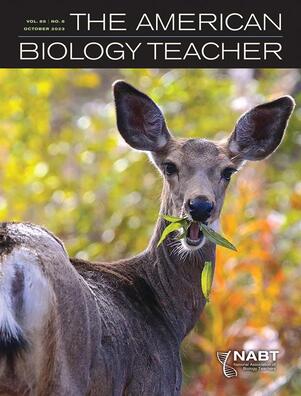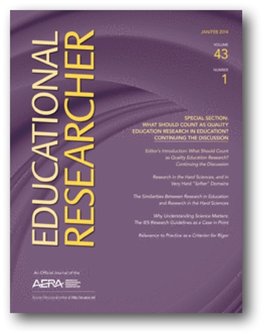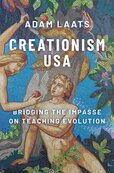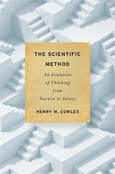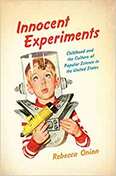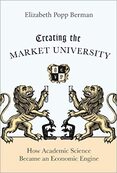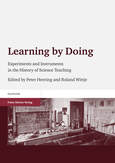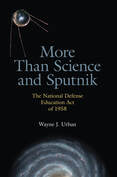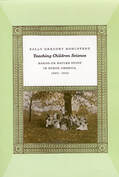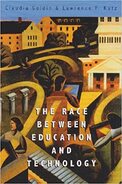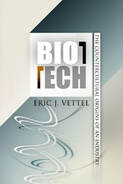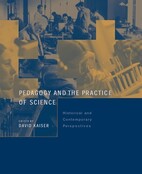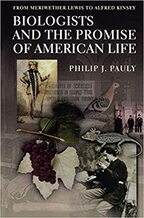|
The "Moonshot" American Science Education Really Needs
In December 2022, former astronaut and current U.S. senator Mark Kelly kicked off the Department of Education’s YOU Belong in STEM conference in Washington, DC. Kelly made the familiar case that training more science and technology professionals is crucial for the economy and national security. It was the NASA Apollo missions to the moon, he explained, that inspired him to pursue a career in science. This seems sensible enough: Science is the engine of technological innovation, which drives economic growth, and schools are not producing enough scientists ready to enter the STEM-career pipeline. The problem is, that isn’t true. We need to move the focus of our science classrooms away from just learning disciplinary content—the facts, concepts, and theories of biology. Instead, we should build our national science curriculum around the conviction that everyone needs to understand what science is, how it works, and why it’s smart to trust experts. — Complete Commentary Why Understanding Science Matters: The IES Research Guidelines as a Case in Point In science education there have been persistent calls for greater attention to questions of policy. What comes to mind typically is work on STEM recruitment or how statewide science assessments might reduce the achievement gap, and so on. But a more neglected line of inquiry centers on the manner in which science teaching relates to the formation of public policy more generally. The focus here being on how our understanding of what science is and how it works shapes the policy decisions we make that, in turn, have consequences for how we live. The Institute for Education Sciences (IES) funding guidelines provide an object lesson of the way in which our perceptions of science matter in this regard. — Complete Commentary |
|
An Inconvenient Truth about Science Education
The teaching of global warming is emerging as a hot-button issue in U.S. schools. This raises important questions about how well science education has prepared us to deal with the leading socioscientific issues of our time. More content isn’t the answer. What’s needed is greater attention to how science is actually done. — Complete Commentary |
|
Creationism USA: Bridging the Impasse on Teaching Evolution by Adam Laats (Oxford University Press, 2021). Science Education 105 (2021).
The clash between science and creationists (be they of the intelligent design, creation science, or old-school, Scopes-trial sort) has a long history that has been chronicled in a number of books....Given this established stream of scholarship, one could be forgiven for asking what Adam Laats might have found that’s new to say in his most recent book on the subject. After spending some time with this highly readable and engaging book, I am happy to report that he offers something quite new indeed.... The Scientific Method: An Evolution of Thinking from Darwin to Dewey by Henry M. Cowles (Harvard University Press, 2020). Social History of Medicine 34 (2021). Contrary to what some might think from the title, this book is not about the day-to-day practices of research scientists per se. Nor does it contain descriptions about their methods of data collection or statistical tests for drawing conclusions about this or that sort of laboratory finding. Rather it is the story of the scientific method as an idea—an idea conceptualized in early nineteenth-century Britain and its evolution through the first decades of the twentieth century in the United States..... Innocent Experiments: Childhood and the Culture of Popular Science in the United States by Rebecca Onion (University of North Carolina Press, 2016). Technology & Culture 59 (2018): 197-199. In this work, Onion examines the “emotional pedagogy” that occurred in various spaces outside of the formal school curriculum where children encountered science with all its social and cultural appurtenances and explores, in particular, the longstanding association between ideas of childhood curiosity and scientific thinking.... Creating the Market University: How Academic Science Became an Economic Engine by Elizabeth Popp Berman (Princeton University Press, 2012). Journal of American History 99 (2013): 1320-1321. In this slim volume, Elizabeth Popp Berman seeks to provide an explanation for academic science’s emergence as an engine of economic growth and development in the United States since the 1980s. The book doesn’t read like a typical history, at least not one with a traditional narrative form. What Berman offers, rather, is a three-part, analytical case study that supports an explanation rooted in the idea of competing institutional logics.... Learning by Doing: Experiments and Instruments in the History of Science Teaching edited by Peter Heering and Roland Wittje (Franz Steiner Verlag, 2011). Technology & Culture 54 (2013): 225-227. In this collection, the editors have highlighted a potentially fertile nexus of technology and social practice—manifested in the laboratory and instructional apparatus of teaching—that promises to answer questions about the changing relationship between research and teaching; the changing emphasis among teaching by text, demonstrations, and laboratories; and the development of these various approaches over time and how institutional and national contexts mattered. More than Science and Sputnik: The National Defense Education Act of 1958 by Wayne J. Urban (University of Alabama Press, 2010). Journal of Southern History 77 (2011): 1044-1045. For years, anyone looking to understand the National Defense Education Act had only one place to go, Barbara Barksdale Clowse’s, Brainpower for the Cold War (1981), a book which offers a detailed account of the legislative wrangling that led to the passage in 1958 of this important piece of legislation. Wayne Urban’s new book, with its greater historical distance and rich contextualization, shows us that there is a good deal more to the story than what we thought we knew. Teaching Children Science: Hands-On Nature Study in North America, 1890-1930 by Sally Gregory Kohlstedt (University of Chicago Press, 2010). “Science Education: History at the Edge,” essay review for Studies in the History and Philosophy of Biological and Biomedical Sciences 42 (2011): 270-273. Kohlstedt tells the story of a group of scientists and science educators who launched an entirely new subject in the schools of North America. Moving from early popularization efforts in the American naturalist tradition of the 1800s to the more formal school science structures in the 1930s, she offers what she calls an institutional account of the circumstances that led to the widespread dissemination and adoption of nature study as a novel approach to science teaching in schools.... The Race between Education and Technology by Claudia Goldin and Lawrence F. Katz (Harvard University Press, 2008). Technology & Culture 50 (2009): 970-971. Claudia Goldin and Lawrence Katz serve up a compelling metaphor, one of a contest between human ingenuity on one side in the form of ongoing, sometimes rapid, technological development and the ability of society, on the other side, to impart the necessary knowledge to the nation’s workforce. The winners are those American workers who have enjoyed higher wages as they worked their way up the educational ladder. The losers include those who have lagged behind. The questions for Goldin and Katz are what specific role has education played in all this and, ultimately, what do we do about it? ... Biotech: The Countercultural Origins of an Industry by Eric J. Vettel (University of Pennsylvania Press, 2006). American Historical Review 112 (2007): 1230-1231. Biotechnology—in its gene splicing and recombining form—seems so much a present concern that it sounds almost strange to talk about it in historical terms. But in this book, Eric Vettel, indeed, chronicles the history of biological engineering, tracing its emergence to the middle years of the previous century. As Vettel tells it, the groundwork for our modern commercial industry was laid in the booming postwar years of American research when money from newly flush government agencies like the National Science Foundation and the National Institutes of Health flooded universities with the aim of strengthening the country’s scientific infrastructure.... Pedagogy and the Practice of Science: Historical and Contemporary Perspectives edited by David Kaiser (MIT Press, 2005). History of Education Quarterly 46 (2006): 628-630. In treating questions related to student experience, the structures of schooling, or even the place of education in its broader social and political context, historians have almost exclusively focused on education as an enterprise aimed at what might be thought of as general learning. Rarely examined is the more targeted role of education in transmitting particular sets of skills and competencies within a given professional community. This is the topic that David Kaiser set out to explore in Pedagogy and the Practice of Science,... Biologists and the Promise of American Life: From Meriwether Lewis to Alfred Kinsey by Philip J. Pauly (Princeton University Press, 2000). History of Education Quarterly 42 (2002): 274-275. Philip Pauly has written a wonderful book about biologists and their work on the American continent. Spanning the period from the early nineteenth century to the middle of the twentieth, this work colorfully depicts the professional activities and struggles of an incredibly diverse assortment of individuals and institutions that collectively shaped the field of biology in the United States.... Science Education as/for Sociopolitical Action edited by Wolff-Michael Roth and Jaques Désautels (Peter Lang, 2002). Science Education 88 (2004): 292-294. The essays in this edited volume promise to open up new avenues for reconceptualizing science education as an instrument of social and political engagement. Indeed, the editors, Wolff-Michael Roth and Jacques Désautels consider the book a manifesto calling for a critical re-examination of what currently passes as science teaching.... |
